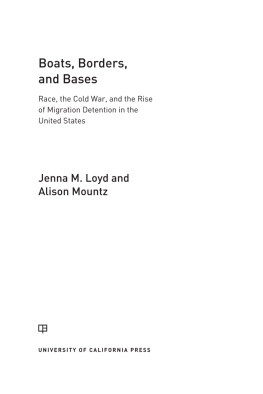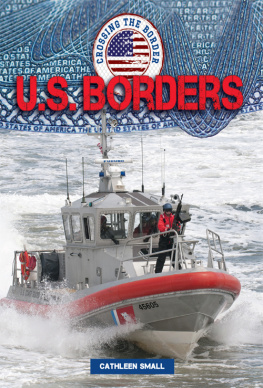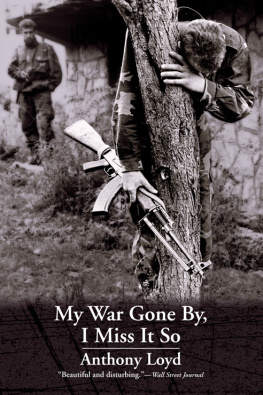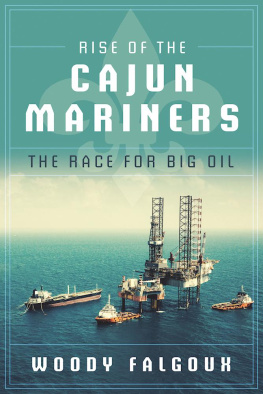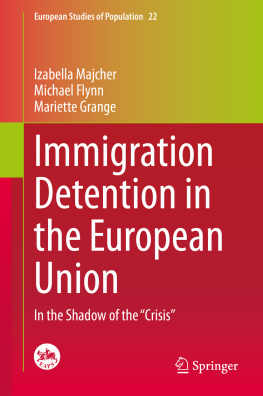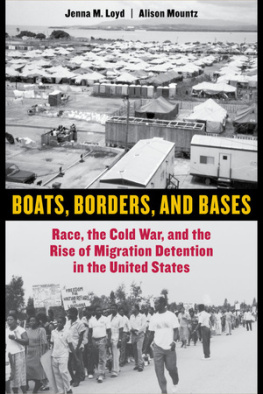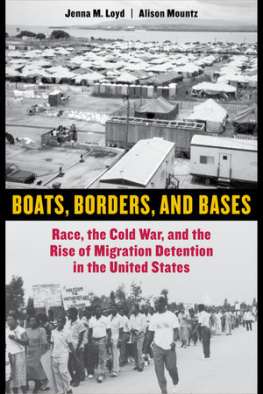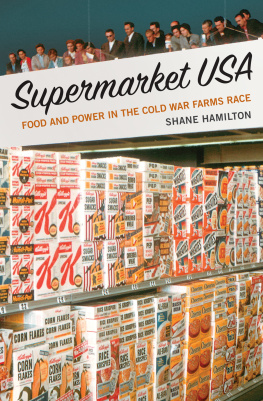Boats, Borders, and Bases
Boats, Borders, and Bases
Race, the Cold War, and the Rise of Migration Detention in the United States
Jenna M. Loyd and Alison Mountz

UNIVERSITY OF CALIFORNIA PRESS
University of California Press, one of the most distinguished university presses in the United States, enriches lives around the world by advancing scholarship in the humanities, social sciences, and natural sciences. Its activities are supported by the UC Press Foundation and by philanthropic contributions from individuals and institutions. For more information, visit www.ucpress.edu.
University of California Press
Oakland, California
2018 by The Regents of the University of California
Library of Congress Cataloging-in-Publication Data
Names: Loyd, Jenna M., 1973 author. | Mountz, Alison, author.
Title: Boats, borders, and bases : race, the cold war, and the rise of migration detention in the United States / Jenna M. Loyd and Alison Mountz.
Description: Oakland, California : University of California Press, [2018] | Includes bibliographical references and index. |
Identifiers: LCCN 2017044582 (print) | LCCN 2017051141 (ebook) | ISBN 9780520962965 (ebook) | ISBN 9780520287969 (cloth : alk. paper) | ISBN 9780520287976 (pbk. : alk. paper)
Subjects: LCSH : Alien detention centersUnited States. | Detention of personsUnited States. | Illegal aliensGovernment policyUnited States. | HaitiEmigration and immigration. | CubaEmigration and immigration. | RefugeesCaribbean AreaSocial conditions. | United StatesEmigration and immigrationGovernment policy. | United StatesRace relationsHistory.
Classification: LCC KF 4800 (ebook) | LCC KF 4800 . L 69 2018 (print) | DDC 365/.4dc23
LC record available at https://lccn.loc.gov/2017044582
Manufactured in the United States of America
26 25 24 23 22 21 20 19 18
10 9 8 7 6 5 4 3 2 1
To the many organizations and people who have survived, organized, and fought against the violence of confinement in detention and along borders, and to the memory of those who lost their lives trying
Contents
Illustrations
FIGURES
MAPS
Acknowledgments
Research for this project took place over many years, in many places, and involved countless discussions. Thank you to Mona Lynch, Geoff Boyce, Sarah Launius, Matt Lowen, Todd Miller, Anne Bonds, Andrew Burridge, Judah Schept, Silky Shah, Bob Libal, Amy Gottlieb, David Hernndez, Ethan Blue, Kelly Lytle Hernndez, Nancy Hiemstra, Lydia Pelot-Hobbs, Deirdre Conlon, Lauren Martin, Mat Coleman, Niels Frenzen, Ruthie Gilmore, Craig Gilmore, Jack Norton, Naomi Paik, Brett Story, Martha Escobar, Jana Lipman, and Perla Guerrero for their work and the brilliance they have shared. They have shaped our project in all the insightful ways and none of the misguided ones.
We are grateful to Kate Coddington, Emily Mitchell-Eaton, and Tina Catania, each thoughtful scholars intimately involved as research assistants on the Island Detention Project. We also thank Laurier cartographer Trina King-Tassone for her talent and labor, and geographer Rob Fiedler for his cartography and intellectual engagement during the early parts of this research.
This work was presented at various departments, universities, and conferences where we benefited from gracious hosts and thoughtful feedback from live audiences and conversations with colleagues. We especially thank Imogen Tyler whose intellect and spirit provide inspiration and haven and Anna Secor and Patricia Ehrkamp for their scholarship and collegiality.
This book would not have been possible without the knowledge and patience of archivists and staff at the Arizona Historical Society, Arizona State University Libraries (including the now closed Arizona Historical Foundation), Chaffee Crossing, Delta State University Library Archives, the George Bush Presidential Library, the Jimmy Carter Library, the William J. Clinton Presidential Library, the Rubenstein Library at Duke University, the Genesee County History Department, the independent GovernmentAttic.org Digital Archive, Louisiana State University Libraries Special Collections, the National Archives in Washington, D.C., and College Park, MD, the Pinal County Historical Society, the Ronald Reagan Presidential Library, University of Arkansas Libraries Special Collections, the U.S. Citizenship and Immigration Services Library, and the Micronesian Area Research Center at the University of Guam.
We also thank Maura Roessner, Sabrina Robleh, and the art department at the University of California Press for their patience, support, and work on the manuscript. Additionally, we were honored to have insightful and careful reviewers.
Alison thanks comrade and co-conspirator Jenna who is an inspiration in the archiveand beyond. Ive so enjoyed the days, hours, weeks, and years spent talking about ideas, unraveling mysteries, putting together pieces of an elaborate puzzle, building arguments, and meeting up in Syracuse, Toronto, Omaha, Cambridge, Waterloo, Athens, Valletta, Pavia, and other places our work brought us for seven years.
I am also grateful for the friendship, intellectual engagement, camaraderie, and support of friends, colleagues, and students, near and far, including Ishan Ashutosh, Ranu Basu, Lisa Bhungalia, Emily Billo, Alice Bloch, Kate Coddington, Mat Coleman, Deirdre Conlon, Alison Crosby, Jennifer Chun, Win Curran, Catherine Dauvergne, Judy Han, Emily Gilbert, Wenona Giles, Roberta Hawkins, Nancy Hiemstra, Jenna Hennebry, Paul Hodge, Suzan Ilcan, Loren Landau, David Ley, Audrey Macklin, Pauline Maillet, Cetta Mainwaring, Jacque Micieli-Voutsinas, Shiva Mohan, Beverley Mullings, Peter Murphy, Jackie Orr, Gerry Pratt, Monica Romero, Kim Rygiel, Mark Salter, Rachel Silvey, Rebecca Slisz, Farhana Sultana, Imogen Tyler, Tara Vinodrai, William Walters, Margaret Walton-Roberts, Celine and Helen Watkins, Kira Williams, Graham Webber, and Richard Wright. A lot of life happened as I conducted this research and wrote this book. I worked in positions at three universities in Canada and the United States: Syracuse Universitys Geography Department, Harvard Universitys Canada Program at the Weatherhead Center for International Affairs, and Wilfrid Laurier Universitys Geography Department and its Balsillie School of International Affairs. I am grateful not only to colleagues but to administrative staff in each of these three places who provided important support, without which this work would not be possible. Most importantly, I thank my family. Over the course of this project, I was so fortunate to give birth to two beautiful children: Maddie Ruth and Henry. Their arrivals enhanced my life and work, intensifying my desire to better understand the past in order to work collectively for a better future. I am forever grateful to my partner, Jennifer Hyndman, for love, support, humor, and reprieve at the beginning and end of each day. We are also indebted to our extended families for tireless love and support: Bob and Henrietta Mountz, Sarah and Avery, baby Kai, Mary, Pete, and Bruce Hyndman.
For Jenna, this book invokes memories of road trips for archival and field research. On a couple of occasions, I had the great opportunity to do research with friends. Ashley Hunt and I went photographing prisons across Louisiana and found delicious peach cobbler in Jackson, Mississippi. Emily Mitchell-Eaton and I got to work at the Clinton Library together and warm ourselves from the air conditioning while watching turtles swimming in the river. More often, my days of archival work would be punctuated by sending a text message to Alison, attached with the photograph of a particularly juicy document. She has proven to be a generous and inspiring interlocutor and coauthor. I am so grateful for her expansive thought and humor at all the right moments.
Next page
